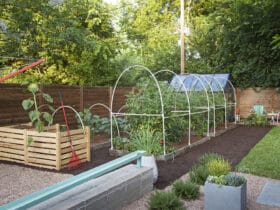Are you curious about what are the types of community gardens so you can join a community garden according to your need & interest?
There is no doubt community garden is a one of the best place where you can not only grow a flower, vegetables, fruits & herbs easily with the help of your friend & community members but also exchange plants & seeds easily and it saves you the gardening cost.
Before knowing what are the types of community gardens, firstly know that what are the benefits of a community garden.
Benefits of community gardens:
1. Fresh products:
One of the great advantages of a community garden that you can avail of fresh vegetables, fruits & other side products of plants.
2.Cost management:
By joining community gardening you can easily control your gardening budget by sharing or exchange your plant & seeds from the other community members.
3.Healthy lifestyle:
Being a part of community garden members you can easily gain the benefit of a healthy lifestyle. You can easily enjoy the fresh air but also keeps your body fit by doing some work in the community.
4.Beautifying areas:
The great advantage of community gardening that you beautifying your areas that looks amazing and it also relaxes your mind and releases stress.
Also Read: How To Develop A Vegetable Garden Successfully With Best 10 Steps
Types of Community Gardens
1. Neighborhood garden:
In this type of garden a small plot or a land area where all neighbor works together as a team. In this type of garden, mostly vegetable & decorative plants are growing.
2.Allotment garden:
In this type of garden mostly those people are working which have an interest in the garden but they don’t have their own land. Allotment gardens are typically organized in the land that is allotted by someone.
3. Donation Garden:
In this type of garden mostly edible crops are growing, so the fruits, crops & vegetables are donated to the homeless, shelterless, or in an orphanage. Most of the crops are growing in an organic way, so they don’t have any side effects.
4. School gardens:
This type of garden is generally practiced in school, so the urban child learns the way of agriculture and experiences the different aspects of agriculture. In this type of garden, children are familiar with modern practices of agriculture or about sustainable agriculture and what is the impact of the environment of agriculture.
5. Rooftop or Balcony garden:
This type of community gardening is most popular in urban areas where the shortage of land, so people start using their roofs & balcony as food-producing areas.
Also Read: Top 12 Best Money Saving Tips For Gardeners









